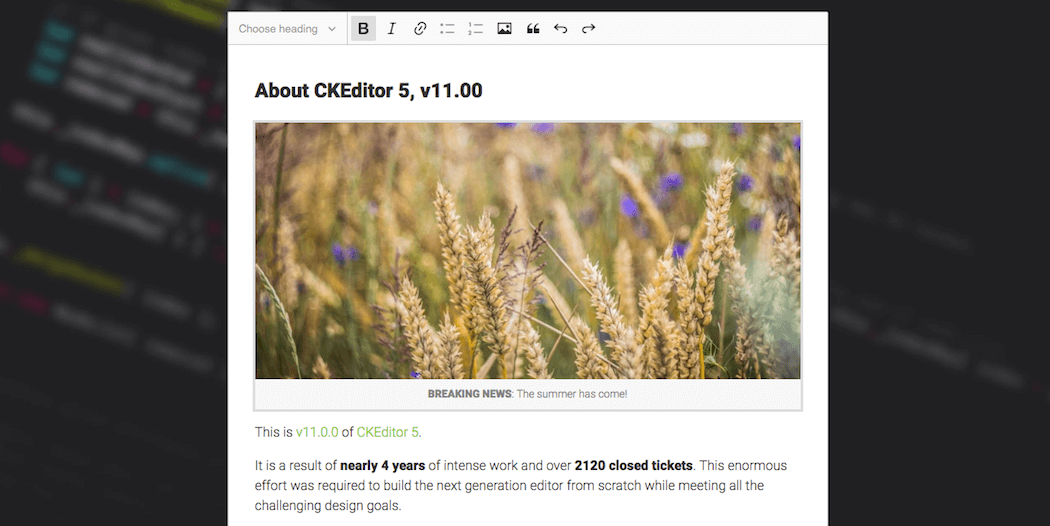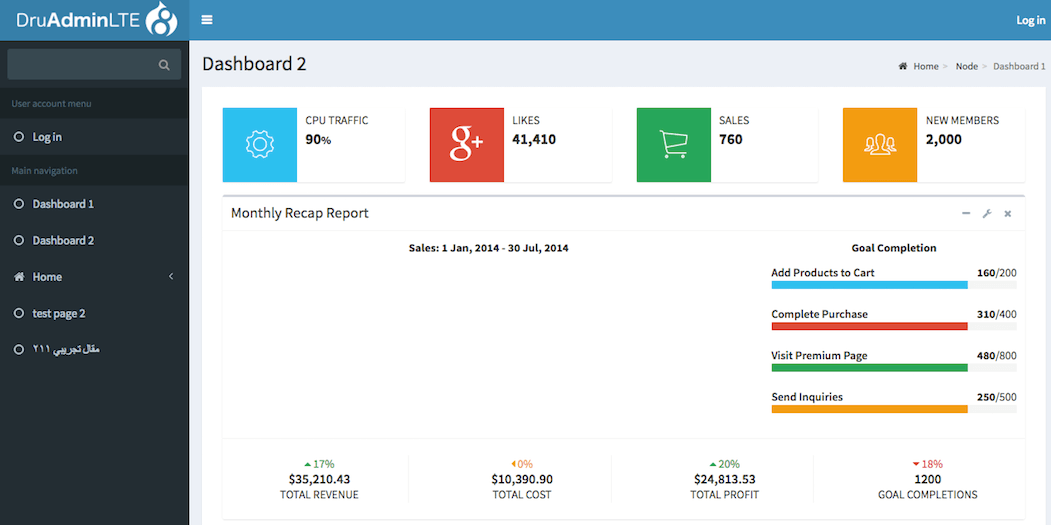An Introduction to Drupal (And How to Get Started)

Drupal is one of the top three Content Management Systems (CMSs) on the web right now. Powerful and lean, it’s perfect for enterprise business sites that need to maximize performance. However, diving into Drupal can seem daunting at first glance.
Fortunately, there are ways to demystify Drupal. There is something of a steep learning curve, but you don’t need to have a deep technical background in order to master it. With a beginner’s guide (and a little patience) anyone willing to take some extra time can how to use this CMS effectively.
In this post, we’ll tell you a bit about the history of Drupal, as well as the advantages of the platform over other website builders. This will help you decide if it’s worth investing the time and effort required to learn it. Finally, we’ll offer a short guide on how to get started. Let’s begin!
A Brief History of Drupal

First, let’s go over a bit of history. Drupal got its start as a message board named Drop.org, founded by Dries Buytaert and Hans Snijder. In 2001, Buytaert released Drupal as an open-source code, so that others could modify and expand upon it.
Drupal’s first big break came in 2003 when it was used to build DeanSpace, a large collection of connected message boards used for members of the Howard Dean campaign to communicate with each other. It has since expanded into the complex CMS that it is today. Yet, it’s still built by a collective open-source community.
One of the big changes between the original iteration of Drupal and where it is now is that in 2007, the developers incorporated a What You See Is What You Get (‘WYSIWYG’) editor:

This means that, even if you end up hiring a web developer to create your site, there’s a user-friendly interface where you can create text, images, and other content. WYSIWYG editors give you the independence to run your site without constantly having to send text changes back and forth to a developer. You can even try out a free online demo to see what using this editor is like.
The Pros and Cons of Using Drupal for Your Website
Although Drupal is very powerful, it is also somewhat difficult for beginners to learn. That may lead you to wonder why should you use Drupal instead of a simpler system, such as WordPress or Joomla!
Ultimately, Drupal is an excellent middle ground between those CMS options and building your own website from scratch. It enables you to create complex sites, but also has an extensive library of modules that save you time, and let even dedicated non-coders add new features to their sites. Even if you hire a developer, it can save you money in the long run versus an HTML site. That’s because its WYSIWYG interface enables you to make text and content changes on your own.
If you put in the time to understand Drupal, it can be quite rewarding. For coders in particular, there’s an entire community out there building systems that anyone can use. It also offers higher security and better enterprise-level scaling than any other CMS on the market. Plus, once your site is set up, the dashboard is relatively easy to use.
However, if you’re planning to build a Drupal site on your own, you should probably have some coding experience under your belt. It can take a significant amount of time and effort to learn the system from scratch. The main con is that, if you don’t want to hire a developer, it is not as beginner-friendly as WordPress or Joomla!
Pros of Drupal CMS
- Highly Customizable: Extensive flexibility with custom content types, fields, taxonomies, and views, it offers a wide range of themes and modules to build unique websites tailored to specific needs.
- Scalability: Ideal for large-scale websites with heavy traffic and complex functionality, it supports multisite functionality, making it suitable for organizations managing multiple sites.
- Strong Security Features: It is recognized for robust security measures, including regular updates and a dedicated security team. Drupal is trusted by governments, enterprises, and higher education institutions for secure applications.
- Advanced User Role and Permission System: It offers granular control over user permissions, allowing precise management of what users can do on the site.
- SEO-Friendly: Modules like Pathauto, Metatag, and XML Sitemap make optimizing for search engines straightforward. It’s clean URL structures and customizable meta tags contribute to better SEO performance.
- Open Source: Free to use with no licensing fees, backed by a large, active developer community, Drupal encourages innovation with contributions from thousands of developers worldwide.
- Multilingual Capabilities: It includes native support for building multilingual websites without relying heavily on third-party extensions. The core modules include features for translation and localization.
- Excellent for Complex Content Needs: Handles large amounts of structured content effectively, making it ideal for content-heavy websites like news portals or academic institutions.
Cons of Drupal CMS
- Steep Learning Curve: Drupal requires advanced technical knowledge to fully utilize its features, particularly for developers and administrators. Non-technical users may struggle with its interface compared to platforms like WordPress.
- Time-Intensive Development: Building and maintaining a Drupal site can be more time-consuming than using simpler CMS platforms. Customization often requires significant time and effort due to its complexity.
- Resource-Heavy: Drupal’s robust features and scalability demand more server resources, which may require investing in premium hosting. Performance optimization may require technical expertise or additional modules.
- Smaller Module Ecosystem: While the module library is extensive, it is smaller compared to WordPress’s plugin repository. Finding a module for specific functions might be more challenging.
- Limited Themes and Design Options: It has fewer pre-made themes compared to WordPress or Joomla, requiring more custom development for unique designs. Some themes may not be as user-friendly or visually appealing out of the box.
- Developer Reliance: Customizing or maintaining a Drupal site often requires the help of a professional developer, increasing costs for businesses without in-house expertise.
- Upgrades Can Be Challenging: Major version upgrades (e.g., Drupal 8 to Drupal 9) often require significant work, as backward compatibility isn’t guaranteed. Custom themes and modules may also need adjustments during upgrades.
How to Get Started with Drupal
As we’ve mentioned, Drupal can seem daunting at the start. However, getting started and beginning to experiment with its powerful systems is well within reach.

There are a few simple steps you can follow, if you want to create a new Drupal site as a complete newbie:
- Purchase a hosting plan with one-click install feature. A hosting plan with Drupal pre-loaded saves you the trouble of figuring out how to install it yourself – which is perfect for beginners (plus, our Drupal hosting comes already optimized for speed and performance).
- Familiarize yourself with the platform. You can either buy a book, or peruse one of the many free online tutorials for beginners.
- Understand the terms. Skim through Drupal’s helpful glossary to familiarize yourself with key phrases you’ll need to know.
- Get to know the core modules. The core modules are at the heart of this CMS. Understanding what they are and how they work is vital.
- Begin building your site. As we’ve discussed, Drupal 8 comes with a WYSIWYG editor that you can use to start adding text and images to your pages right away.
- Ask for help when needed. For anything you don’t understand, it has an active forum that’s very accepting of questions.
- Consider hiring a professional. If you’re lost, or if you’re creating a very complex site, consider hiring a professional to get the ball rolling. Then, focus on learning how to update content and make small changes once your site’s framework is in place. For example, if you can’t find a module that does what you want, you may end up needing to hire a programmer to build you something custom.
Drupal is a flexible and powerful solution for websites. This is especially true if you either have some coding experience yourself, or the resources to hire a designer. Once you put in the effort to learn how the system works, you’ll be able to take advantage of its security and enterprise-level scaling ability (among other advantages).
Get started with reliable, affordable Drupal Hosting from A2 Hosting. Launch a new site quickly or let our Guru Crew migrate your existing site to our platform for free. With A2 Hosting, you get premium hardware for ultra-fast performance. Plus, our hosting is backed by our no-risk money-back guarantee, 99.9% uptime commitment, and 24/7/365 in-house customer support. Compare hosting plans now and get started in minutes.



